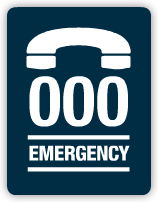
Lithium-ion batteries are a type of rechargeable battery. They can be found in most modern portable devices with rechargeable batteries, including:
- mobile phones
- E-bikes and e-scooters
- laptops
- power tools
- childrens toys
- battery operated furniture.
Minimise the risk
Lithium-ion batteries are more dangerous than traditional batteries because they use different chemicals and internal processes. If a lithium-ion battery isn't managed properly it could:
- overheat
- catch fire
- cause an explosion.
Good safety habits
Make sure you:
- monitor the battery when charging and remove it once it's fully charged
- follow the manufacturer's instructions
- charge batteries away from combustible materials
- safely dispose of old batteries
- buy replacement batteries from reputable suppliers.
Warning signs
Batteries could be faulty and unsafe if you notice these signs:
- heat – extremely hot to touch
- noisy – making strange hissing or cracking sounds
- smell – strong unusual odour
- smoke – the battery is emitting smoke
- changing shape – the battery looks distorted.
Dangerous habits
Don't:
- leave fully charged batteries connected to a charger
- use batteries, products or chargers showing signs of damage
- leave products in hot places or direct sunlight
- put lithium-ion batteries in household rubbish
- modify a lithium-ion battery.
Related information
Other websites
Lithium-ion batteries - Product Safety Australia
Lithium batteries, tools and e-bikes - SA Metropolitan Fire Service

